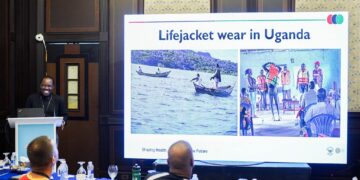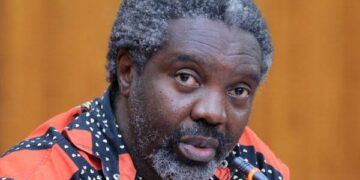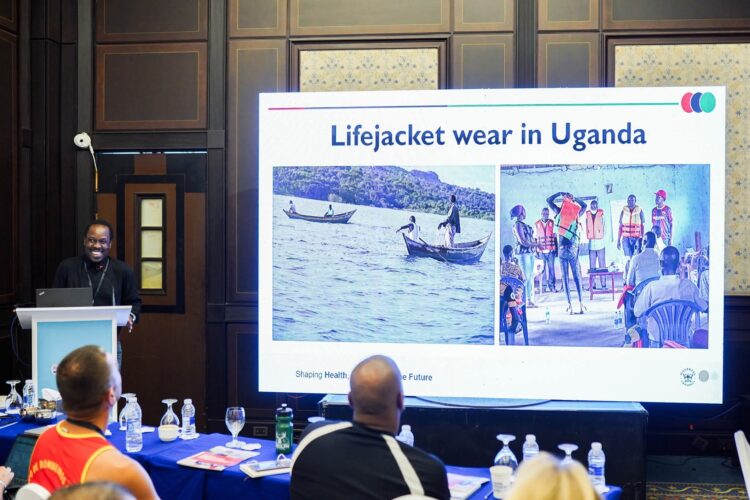By Leonard Kamugisha Akida,
NATIONAL
As the sun dipped behind the mountains of Sharm El Sheikh last week, delegates at the World Conference on Drowning Prevention (WCDP) 2025, paused to absorb a grim reality: more than 300,000 people die from drowning every year, making it one of the world’s most silent public health crises. It was against this backdrop that the World Health Organization (WHO) unveiled a bold global strategy aimed at slashing drowning deaths by 35% by 2035.
The announcement was made at the Park Regency Hotel where hundreds of experts, policymakers, researchers and journalists convened for the WCDP 2025 conference.
WHO representative Dr David Meddings said the new strategy, launched under the Global Alliance for Drowning Prevention is designed to help governments fast-track implementation of life-saving interventions.
“We have an aspiration of reducing drowning rates worldwide by 35% by 2035,” he said. “It’s (National Alliance Drowning Strategy) built around six strategic pillars and 10 priority interventions. It provides a framework for evidence-informed action from global to local level.”
He urged journalists to amplify the message, saying the media plays a crucial role in shifting public perception and influencing government action.
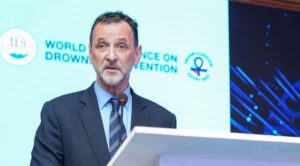
“You guys can play a huge role in enhancing awareness that drowning is a real problem,” he told reporters. “It is robbing many countries of their economic livelihoods by taking away young children and young adults.”
Drowning remains one of the leading causes of death among children aged 1–14, particularly in low- and middle-income countries where over 90% of drowning deaths occur, according to global health estimates.
Despite the heavy burden, drowning remains a neglected public health issue. Dr David says the new strategy provides interventions that are critical in reducing child mortality, noting that many of these programmes are integrated into broader child-care and development initiatives.
“What we are doing is engaging the physician in a very non-exceptional way,” he explained. “There are many avenues we can explore in children’s drowning prevention apart from helping children to swim.”
He called for a collective response: “Everyone has a role to play, from parents teaching swimming skills to local governments enforcing safety regulations.”
Additionally, global leaders expressed commitment to supporting the new strategy. For instance, the president of the International Life Saving Federation (ILSF), Dr Graham Ford AO, said the WHO strategy has been endorsed by safety councils worldwide and offers a unified approach to a crisis that cuts across continents.
“This conference is assessing the global burden of drowning and advancing preventative strategies,” he said. “Swimming and water safety education for all ages, lifesaving, maritime rescue, emergency response and medical care, managing climate and disaster risks, and strengthening research – all these require collaboration.”
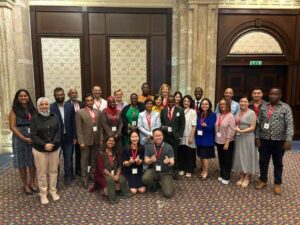
He emphasized that lower-income countries and high-risk communities must be prioritised, given their disproportionate vulnerability to flooding, poor infrastructure, and limited access to safety training.
“Collaboration between nations and communities is the only way to achieve sustainable and innovative responses,” he added.
During the conference, it was realized that lack of data remains a major obstacle in drowning prevention.
Experts argue that efforts to tackle drowning are hampered by inadequate and inaccurate data. Many drowning incidents in rural areas go unreported, and some regions face chronic challenges with data quality.
She urged countries to invest in reliable, evidence-based data systems.
“We are fully committed to drowning prevention,” said Kelly Larson, an official from Bloomberg Philanthropies. “Our goal is to ensure that governments take on the work Bloomberg Philanthropies has started. Drowning prevention is a multisectoral issue, but governments must ensure these efforts are sustained and scaled.”
She said Bloomberg will continue supporting capacity building, stakeholder training and local organisations to take the lead on drowning prevention initiatives.
The conference brought together delegates from more than 50 countries, including government officials, global health leaders, safety experts, researchers and journalists.

Participants called for the urgent need of financing data systems, scaling water-safety education, and integrating drowning prevention into national development agendas.
“Drowning may be silent, but the world can no longer afford to ignore it,” Dr Edward Basenge, Program Officer in the Department of Community Health at the Ministry of Health Uganda observed. Basenge expressed concerns that funders have been engaging primarily with NGOs while leaving out policymakers something he says limits progress. According to Basenge, meaningful impact can only happen when policy makers are fully involved at all levels.
As the conference closed, one message remained clear: anyone can drown, no one should.
